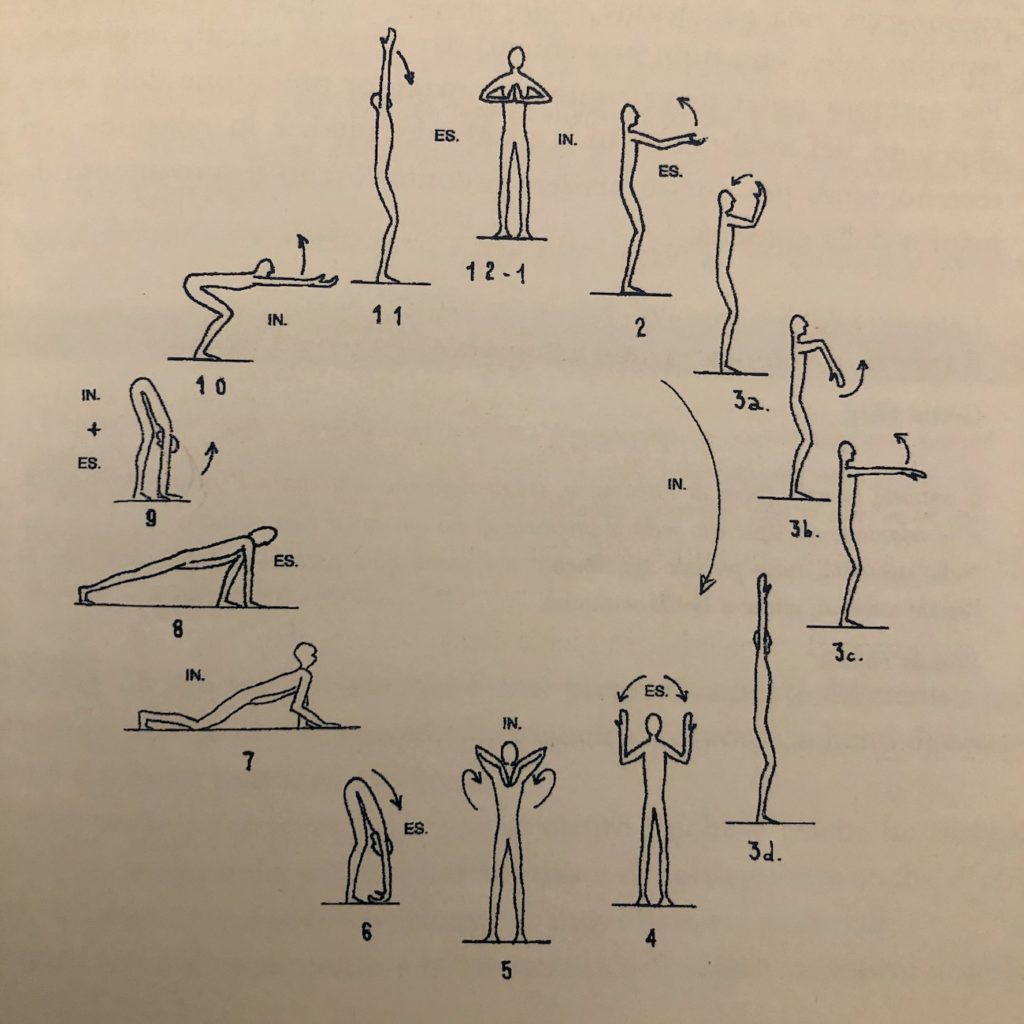“Retracing the gestures do not mean to repeat. When what matters is learning, there is no repetition: Rather, deepens understanding through subsequent steps. Without this recurrence of the gesture, this ripercorrerlo, do not learn. It is also clear that to learn it takes vigilance, opening, sensibility. The repeated recourse to customs, The no trace.”
Renata Angelini and Moiz Palaci [*]
Among the sequences that we like to propose we find that call “The small Sun Salutation”.
We think it can be particularly suitable also in this moment of “reduced mobility” because it is a simple sequence where movement and breath are coordinated, suitable for anyone since it does not require large joint movements or special efforts: It takes place on two feet and, if possible, we can add some variants in the lunge that, however, they are negligible if this movement is not agile and / or would not lead to a comfortable posture. For this reason, we suggested it inside the small bag for the practice we called “A guide to the positions for the 40ena“.
The practice of Sun salutation it is widespread among different traditions and lineages and each maintains its own peculiarities; we had the opportunity to experiment with this sequence with Walter Thirak Ruta during the formative years, just as equally significant and interesting alternative to the more “classics” sun salutations, and we find it explained in detail in the article edited by Moiz Palaci and Renata Angelini “Yoga paths”, one of the publications YANI (Association Country Insengnati Yoga).
It is a basic sequence 12 gestures, performed with great presence and accompanied by breathing: Walter suggested to perform the gestures so “theatrical”, intending to put an emphasis on gestures for “direct them” better from an energy point of view.
Angelini and Palaci indicate the importance of breathing regularly, able to decrease that form of urgency that often accompanies us and leads us to “run away” by location, and the ability to “maintain a constant relationship with the support base during the concatenation of movements”.
It lends itself to be practiced accompanied by Sūrya Mantra, the song of the 12 of the names of the sun, in this way the gestures can take on a greater ritual and symbolic value, which will be exemplified in gestures: I exhale I offer, I inhale I take and I bring to me and up, I exhale and dive…
In this way, not only will the gestures assume the right theatricality of the rite, but it will allow the sequence to be more easily memorized, in addition to becoming a play tool with boys and girls, who really like this practice.
Generally it is a practice that gives a lot of peace, able to warm the body completely without stressing the joints too much.
It is also possible to practice it while sitting with a few simple adaptations, making it equally effective.
The detail to take care of, whatever the version practiced, is the perception of a stable base of support, from which we start with the inspiration and to which we return with the exhale, transformed by travel.
Then yes that this gesture of prostration and gratitude that we turn to the sun will be our true “revolution motion”.
_____________________
[*] Renata Angelini, Moiz Palaci, A consciousness capable of welcoming movement and not movement, in Yoga Paths n.38, YANI, Milan, 2006


